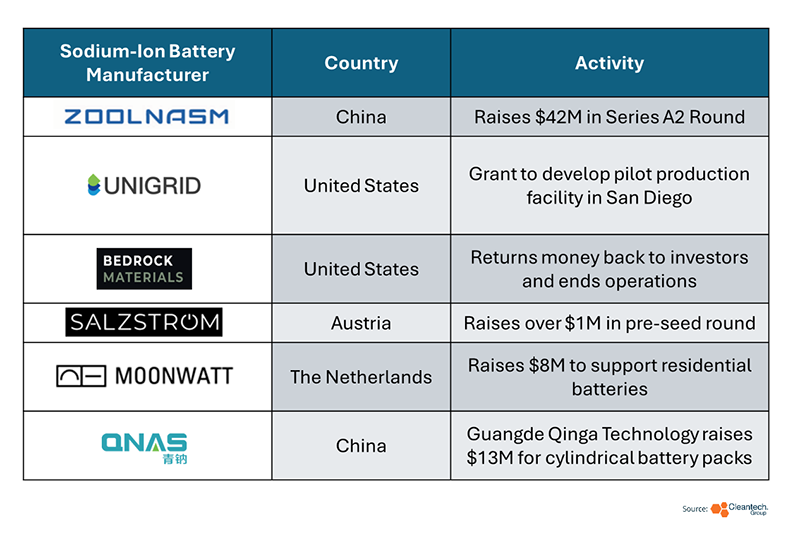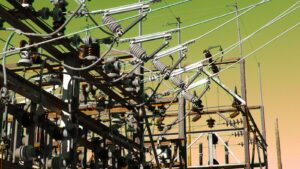The Moving Target for Sodium-Ion Batteries: Innovation and Policies Shape the Evolving Market for Battery Technologies
As global supply chain challenges and uncertainty around lithium supplies persist, sodium-ion batteries will remain an appealing solution given the abundant nature of sodium. However, as costs for lithium-ion batteries come down, the future for sodium-ion batteries may be uncertain. In applications in transport and mobility, the lower energy density of sodium-ion batteries is a challenge. But in stationary storage and long duration applications, the challenge of providing durable long-lasting solutions may also present a greater opportunity if sodium-ion batteries are able to eventually reduce their costs.
Even within the category of sodium-ion batteries there are a variety of different chemistries and ways to design the cell to achieve specific results. Sodium-ion battery manufacturers are using different cathode and anode materials, and some are developing solid-state designs. For example, Natron is using Prussian blue materials for both their anode and cathode and the larger channels for ions to pass through allowing for rapid charge and discharge. This is optimal for use cases that require fast response and so Natron has been working closely with customers in the data center space to support specific energy storage and power needs.
Peak Energy is choosing a different approach. Their NFPP (Na₃(Fe₂PO₄)₃) design is being optimized for stationary needs on the grid scale. Essentially what LFP (Lithium Iron Phosphate) is to lithium-ion, NFPP can be to sodium-ion. NFPP offers better supply chains for the components, a potential to build out domestic manufacturing, and enhanced safety and reliability. However, energy density again may be a factor here so cutting down costs for sodium-ion batteries would be essential.
Comparison With Lithium-Iron-Phosphate
As more advancements are made on the sodium-ion side, so too are developments in other battery chemistries, notably lithium-iron-phosphate batteries. Bedrock Materials, after doing an extensive economic analysis, came to the conclusion that sodium-ion batteries would not be cost competitive against lithium-iron-phosphate chemistries, and decided to return the majority of the $9M raised in its seed round back to investors.
One of the critical conclusions described was that, according to a Bedrock Materials analysis, even using optimistic predictions, sodium cathode materials would not be competitive with LFP graphite cell costs, “Unless the price of lithium carbonate is above $44k/g — far from today’s lithium price of $9.69/kg.” Estimated costs using the current price of lithium carbonate have NFM and NFPP sodium-ion costs at around $80-$100/kWh for cell level costs with NMC and LFP lithium-ion costs at $50-$60/kWh (conclusions from CellVision: An Open-Source Cell Visualization Tool for Sodium-ion Batteries).
Bedrock Materials also notably was looking primarily towards the electric vehicle sector where energy density is a critical role. The EV sector also had tax credits that were tied to the IRA, however, now that the One Big Beautiful Bill (OBBB) has passed, the clean vehicle tax credits will be repealed. However, Peak Energy’s focus on developing battery storage units manufactured in the U.S. using domestic materials may benefit more from the OBBB’s focus on requiring domestic content for clean energy projects and the rules regarding material assistance from prohibited foreign entities of concern (FEOC).
Looking Ahead
While the market shapes out, sodium-ion battery manufacturers are continuing to pave the way researching and developing better and more advanced cells. CATL and BYD are developing and enhancing their sodium-ion battery models in China. Innovators and researchers are exploring ways to improve gravimetric and volumetric energy density, experiment with high-capacity electrode materials and higher voltage electrolytes and improve cycle life and durability.
Some universities, like the University of Chicago, are exploring solid-state sodium-ion batteries and Florida State University is leveraging artificial intelligence and robotic platforms to support with material synthesis to develop more efficient cathodes for sodium-ion batteries. Funding also has gone into quite a few start-ups this year with Moonwatt, Salztrom, Zoolnasm and Guangde Qinga Technologies raising funds and Unigrid receiving a grant to further develop their production facility.




